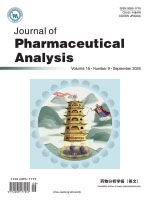2017 Vol. 7, No. 1
Display Method:
2017, 7(1): 10-18.
Abstract:
2017, 7(1): 19-26.
Abstract:
2017, 7(1): 27-33.
Abstract:
2017, 7(1): 34-47.
Abstract:
2017, 7(1): 48-55.
Abstract:
2017, 7(1): 56-62.
Abstract:
2017, 7(1): 63-70.
Abstract:
2017, 7(1): 71-75.
Abstract:



